Search
Remove Ads
Advertisement
Summary 
Loading AI-generated summary based on World History Encyclopedia articles ...
Search Results

Definition
Cuneiform
Cuneiform is a system of writing first developed by the ancient Sumerians of Mesopotamia c. 3500 BCE. It is considered the most significant among the many cultural contributions of the Sumerians and the greatest among those of the Sumerian...

Article
Cuneiform Lexical Lists
Lexical lists are compilations of cuneiform signs and word readings written on clay tablets throughout Mesopotamia. From the late 4th millennium BCE up to the 1st century CE, scribal communities copied, modified, and passed on these cuneiform...

Image
Cuneiform Writing
A relief of cuneiform writing from Assyria.
Exhibited in the British Museum London.

Image
Cuneiform, Gold Earring from Ur III
This is the upper surface of the earring. Note how the cuneiform signs were carved and distributed and their distance from the center. The cuneiform text is read vertically, from the upper surface downwards on each segment, and it continues...
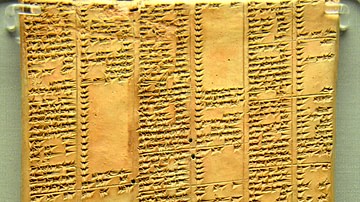
Image
Cuneiform Synonyms List
Occasionally, cuneiform text scribes encounter difficult or rare words. The list on this clay tablet explain such words. From the library of Ashurbanipal at Nineveh (modern-day Ninawa Governorate, Iraq), northern Mesopotamia. Neo-Assyrian...
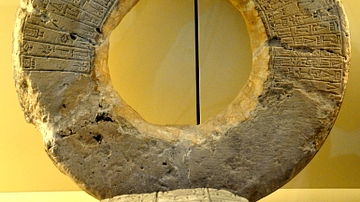
Image
Cuneiform Inscribed Well Curb
A stone ring of a well curb with cuneiform inscriptions which mention the name of the king Shu-Sin of Ur. Ur III, 2030 BCE. From southern Mesopotamia, Iraq. (The Pergamon Museum).

Image
Cuneiform Tablets in Sumerian
Carved stone cuneiform tablets in Sumerian.
Left: Temple of Ningirsu, Girsu. Right: Temple of Nindara, Ur. Dating around 2141-2122 BCE.
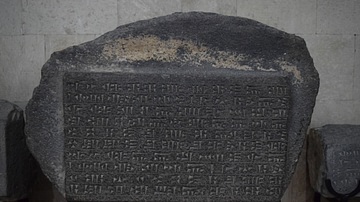
Image
Cuneiform Inscription of Arguishti
The famed "Cuneiform of Arguishti," which celebrates his construction of the fortress of Erebuni in 782 BCE and his martial exploits in nearby regions. (Erebuni Historical and Archaeological Preserve, Yerevan, Armenia.)
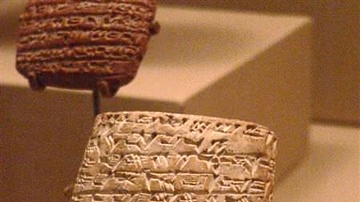
Image
Cuneiform Tablet, Assyria
A clay tablet with cuneiform from an Assyrian trading post, c. 1875-1840 BCE. (Los Angeles County Museum of Art, L.A.).
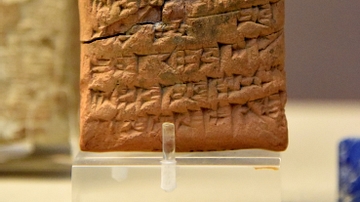
Image
Cuneiform Letter Ordering Men to Go to Court
The cuneiform text of this clay tablet orders men to go to Babylon for a court hearing. This letter from Hammurabi is addressed to an official named Sin-iddinam. Old Babylonian Period, reign of Hammurabi, 1792-1750 BCE. From Larsa, Southern...